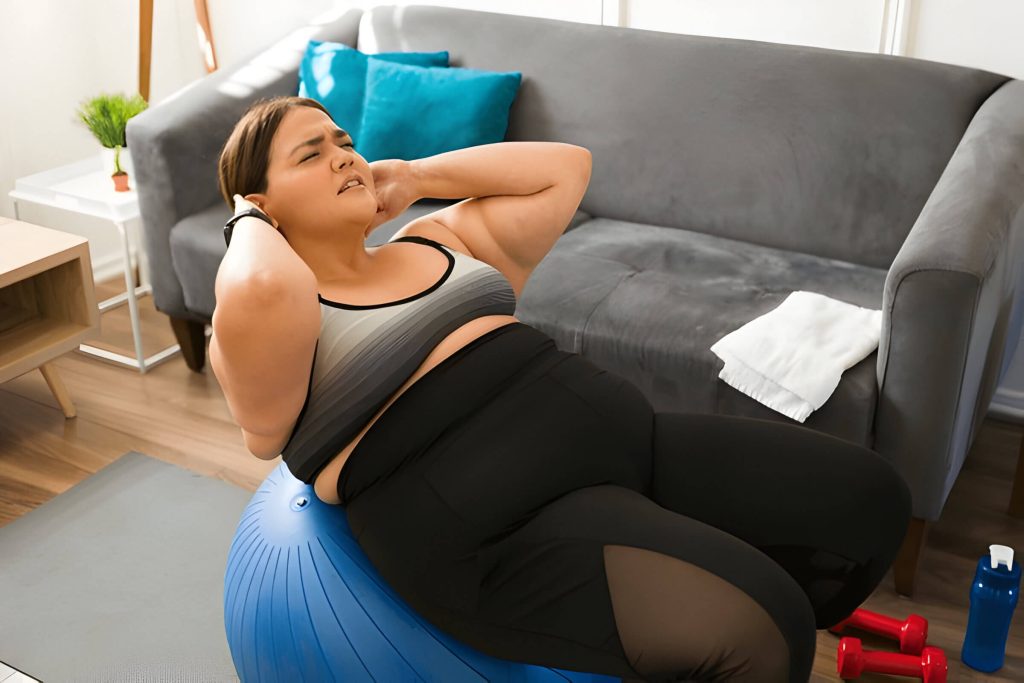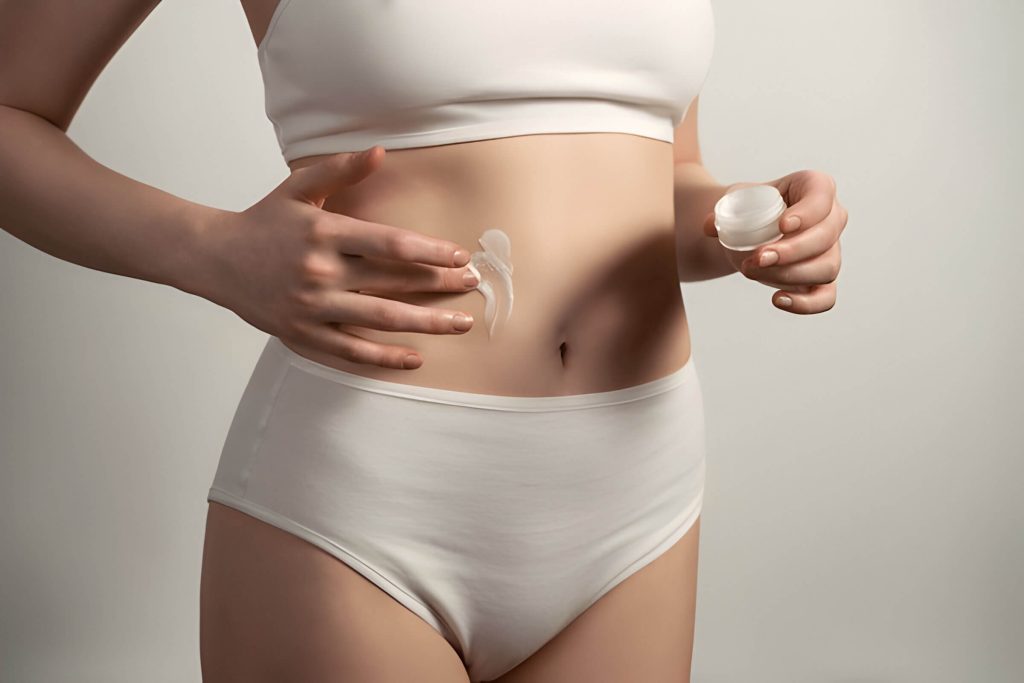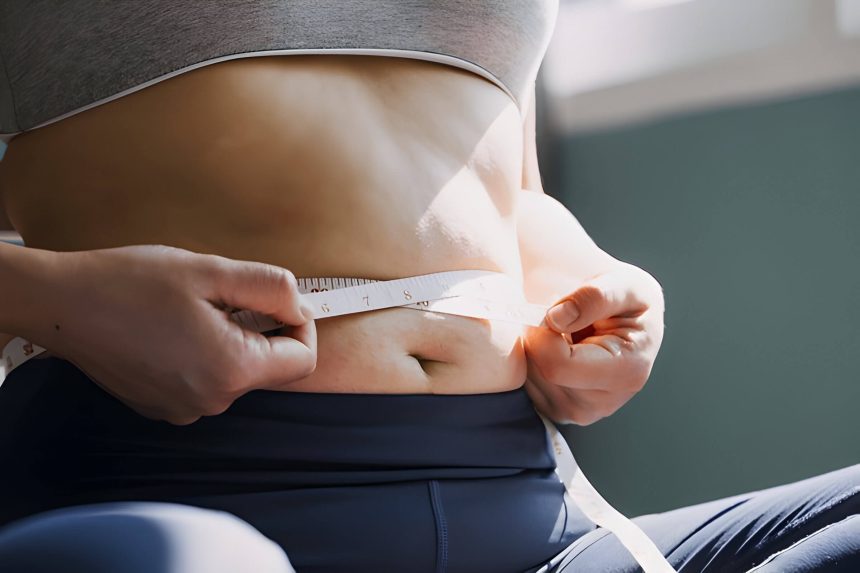Stretch marks and weight loss are closely linked, affecting skin health and appearance. This guide explores their relationship, offering strategies to lose weight while maintaining skin elasticity. It covers exercise routines, diet, topical treatments, and professional interventions, promoting a holistic approach to weight management. Readers will learn how gradual, sustainable weight loss and targeted skincare can help achieve desired results while minimizing skin impact.
Understanding the Connection Between Weight Loss and Stretch Marks
Stretch marks and weight loss are often interconnected, with significant weight fluctuations playing a crucial role in stretch mark formation. As we gain weight rapidly, our skin stretches to accommodate the increased volume, potentially leading to the development of stretch marks. Conversely, when we lose weight quickly, the skin may not have sufficient time to contract, resulting in loose skin and visible stretch marks.
Skin elasticity is a key factor in this process. Our skin’s ability to stretch and bounce back is largely determined by its collagen and elastin content. These proteins provide structure and flexibility to the skin. However, when weight gain occurs too rapidly, it can overwhelm the skin’s capacity to produce enough collagen to maintain its integrity, leading to the formation of stretch marks.
During weight loss, the skin that was previously stretched may not fully retract, especially if the weight loss is sudden or if the individual is older, as collagen production naturally decreases with age. This can make existing stretch marks more noticeable or even lead to the formation of new ones as the skin struggles to adapt to the body’s new shape.
To minimize the impact of weight fluctuations on stretch mark formation, it’s advisable to aim for gradual, sustainable weight loss. This approach allows the skin more time to adjust and potentially reduce the appearance of stretch marks. Additionally, maintaining proper hydration, eating a balanced diet rich in vitamins and minerals, and incorporating strength training exercises can all contribute to improved skin elasticity and collagen production, potentially mitigating the effects of weight changes on your skin.
Effective Weight Loss Strategies for Stretch Mark Prevention
Effective weight loss strategies play a crucial role in preventing stretch marks during weight fluctuations. A healthy diet is the cornerstone of any successful weight loss plan. Creating a calorie deficit is essential, but it’s important to do so gradually to avoid rapid weight loss that can lead to stretch marks. Implementing portion control techniques helps manage calorie intake while still enjoying a variety of foods.
Focus on nutritious meals that provide essential vitamins and minerals to support skin health. Include plenty of fruits, vegetables, lean proteins, and whole grains in your diet. These foods not only contribute to weight loss but also promote skin elasticity, reducing the likelihood of stretch mark formation.
Incorporating metabolism-boosting foods can enhance your weight loss efforts. Foods rich in protein, such as lean meats, fish, and legumes, require more energy to digest, increasing your metabolic rate. Additionally, spicy foods, green tea, and foods high in omega-3 fatty acids can help boost metabolism and support overall skin health.
Sustainable weight loss is key to preventing stretch marks. Aim for a gradual reduction of 1-2 pounds per week, giving your skin time to adjust to your changing body shape. By following these strategies, you can achieve your weight loss goals while minimizing the risk of developing stretch marks.
Exercise Routines to Lose Weight and Tone Skin

When it comes to losing weight and toning skin, a well-rounded exercise routine is key. Incorporating a mix of cardio workouts, strength training, and targeted exercises can help you achieve your goals effectively.
Cardio workouts are essential for burning calories and shedding excess fat. Activities like running, cycling, or swimming can boost your metabolism and improve cardiovascular health. For maximum impact, aim for at least 150 minutes of moderate-intensity cardio per week.
Strength training is crucial for building lean muscle mass, which helps increase your resting metabolic rate and tones your body. Include exercises like squats, lunges, and push-ups in your routine, focusing on major muscle groups.
High-Intensity Interval Training (HIIT) combines cardio and strength exercises in short, intense bursts. This type of workout is particularly effective for burning fat and improving overall fitness in less time.
Yoga for weight loss not only helps burn calories but also promotes mindfulness and reduces stress, which can contribute to weight management. Practices like power yoga or vinyasa flow can be especially beneficial.
To target skin firmness, incorporate skin-firming exercises that focus on problem areas. These may include planks for the core, arm circles for upper body toning, and leg lifts for lower body sculpting.
Hydration and Its Role in Weight Loss and Skin Health
Proper hydration plays a crucial role in both weight loss efforts and maintaining healthy skin. Adequate water intake supports cellular function, helping the body efficiently metabolize fat and flush out toxins. Consuming hydrating foods, such as cucumbers, watermelon, and leafy greens, can contribute to overall fluid balance while providing essential nutrients.
Detox drinks, often infused with fruits and herbs, can enhance hydration while potentially boosting metabolism. These beverages may help curb appetite and reduce calorie intake, supporting weight loss goals. Moreover, staying well-hydrated is vital for skin health, as it helps maintain skin moisture, elasticity, and a youthful appearance.
Water is essential for numerous bodily functions, including regulating body temperature, transporting nutrients, and supporting digestion. By prioritizing hydration through various sources, individuals can optimize their weight loss efforts while simultaneously promoting radiant, healthy skin.
Topical Treatments to Minimize Stretch Marks During Weight Loss

Topical treatments can play a significant role in minimizing the appearance of stretch marks during weight loss. Several over-the-counter options have shown promise in improving skin elasticity and reducing the visibility of these marks.
Moisturizers are essential in keeping the skin hydrated and supple, which can help prevent the formation of new stretch marks. Look for products containing hyaluronic acid, a powerful humectant that attracts and retains moisture in the skin.
Retinoids, derived from vitamin A, are known for their ability to boost collagen production and cell turnover. These properties make them effective in reducing the appearance of existing stretch marks and preventing new ones from forming.
Vitamin E oil is another popular option due to its antioxidant properties. It can help protect the skin from free radical damage and promote healing, potentially reducing the visibility of stretch marks over time.
Cocoa butter, a natural emollient, has long been used to improve skin elasticity and texture. Regular application may help prevent stretch marks by keeping the skin moisturized and flexible during weight loss.
While no topical treatment can completely eliminate stretch marks, consistent use of these products, combined with a healthy lifestyle, can significantly improve the skin’s appearance and minimize the impact of stretch marks during weight loss.
The Importance of Gradual Weight Loss for Skin Elasticity
Sustainable weight loss is crucial for maintaining skin elasticity and preventing excessive sagging. While crash diets may promise rapid results, they often lead to a loss of muscle mass and can cause the skin to lose its firmness. A healthy weight loss rate of 1-2 pounds per week allows the skin to gradually adjust to the body’s changing shape, reducing the risk of loose, sagging skin.
When losing weight too quickly, the skin doesn’t have enough time to contract and conform to the new body contours. This is particularly important for individuals with a significant amount of weight to lose. By adopting a gradual approach to weight loss, you give your skin’s elastin and collagen fibers time to adapt, resulting in a smoother, more toned appearance.
Moreover, sustainable weight loss methods typically involve a balanced diet and regular exercise, which contribute to overall skin health. Proper nutrition provides the necessary vitamins and minerals for skin elasticity, while exercise improves circulation and promotes collagen production. By focusing on a steady, healthy weight loss rate, you’re not only more likely to keep the weight off long-term but also to maintain firmer, more resilient skin throughout your weight loss journey.
Nutritional Support for Skin Health During Weight Loss
When embarking on a weight loss journey, it’s crucial to prioritize skin health to maintain elasticity and prevent sagging. Incorporating collagen-rich foods into your diet can significantly support skin structure and elasticity. Foods like bone broth, fish, and egg whites are excellent sources of this essential protein.
Antioxidants play a vital role in protecting skin cells from damage caused by free radicals. Berries, leafy greens, and dark chocolate are packed with these beneficial compounds. Additionally, omega-3 fatty acids found in fatty fish, chia seeds, and walnuts help maintain skin hydration and reduce inflammation.
Vitamin C is another key nutrient for skin health, as it promotes collagen synthesis. Citrus fruits, bell peppers, and broccoli are rich in this vitamin. To further support skin health, consider zinc supplements, which aid in skin repair and renewal. However, always consult with a healthcare professional before starting any new supplement regimen.
By focusing on these nutrient-dense foods and supplements, you can support your skin’s health and appearance throughout your weight loss journey, ensuring a radiant and resilient complexion.
Professional Treatments for Stubborn Stretch Marks
Professional treatments offer effective solutions for those struggling with stubborn stretch marks. Laser therapy is a popular option, using focused light to stimulate collagen production and improve skin texture. Microneedling, another advanced technique, creates tiny punctures in the skin to trigger healing and reduce the appearance of stretch marks.
Chemical peels can be beneficial for lighter stretch marks, exfoliating the skin’s surface to promote cell turnover. Radiofrequency treatments use heat energy to tighten skin and enhance collagen production, potentially improving the look of stretch marks over time.
Dermabrasion, a more intensive treatment, involves removing the top layer of skin to encourage new growth and minimize the visibility of stretch marks. Each of these professional treatments has its own benefits and considerations, and it’s essential to consult with a dermatologist to determine the most suitable approach for your specific case.
Long-term Strategies for Weight Management and Skin Care

Maintaining long-term results in weight management and skin care requires a comprehensive approach that encompasses various aspects of your lifestyle. A balanced diet rich in nutrients, lean proteins, and whole grains is essential for both weight control and skin health. Regular exercise not only helps in managing weight but also improves circulation, which contributes to a healthy, glowing complexion.
Establishing a consistent skincare routine is crucial for maintaining skin health. This should include cleansing, moisturizing, and protecting your skin from sun damage. It’s important to choose products that suit your skin type and address your specific concerns.
Stress management plays a significant role in both weight management and skin care. High stress levels can lead to emotional eating and hormonal imbalances that affect skin condition. Incorporating stress-reduction techniques such as meditation, yoga, or deep breathing exercises can have positive effects on both your weight and skin.
Remember, sustainable results come from long-term lifestyle changes rather than quick fixes. Consistency is key in maintaining your weight and skin care goals. Regular check-ins with healthcare professionals or dermatologists can help you stay on track and make necessary adjustments to your routines as your body’s needs change over time.
Embracing a Holistic Approach to Weight Loss and Stretch Mark Reduction
Achieving weight loss and reducing stretch marks requires a comprehensive approach that addresses multiple aspects of health and wellness. While there is no one-size-fits-all solution, combining various strategies can lead to significant improvements in both areas.
A balanced diet rich in nutrients, coupled with regular exercise, forms the foundation of any successful weight loss journey. Staying hydrated and getting adequate sleep are equally important factors that contribute to overall health and can aid in weight management.
For stretch mark reduction, consistent skincare routines and targeted treatments can make a noticeable difference. However, it’s crucial to remember that some stretch marks may never completely disappear, and that’s perfectly normal.
The key lies in adopting sustainable lifestyle changes rather than seeking quick fixes. By focusing on overall health and well-being, you’re more likely to see long-lasting results in both weight management and skin appearance.
Every body is unique, and progress takes time. Be patient with yourself, celebrate small victories, and consult with healthcare professionals when needed. With dedication and a holistic approach, you can work towards your goals while fostering a healthier relationship with your body.
